The Water Systems of North and Central Florida
Florida Aqua: Artistic Reflections on Water
A Digital Exhibition
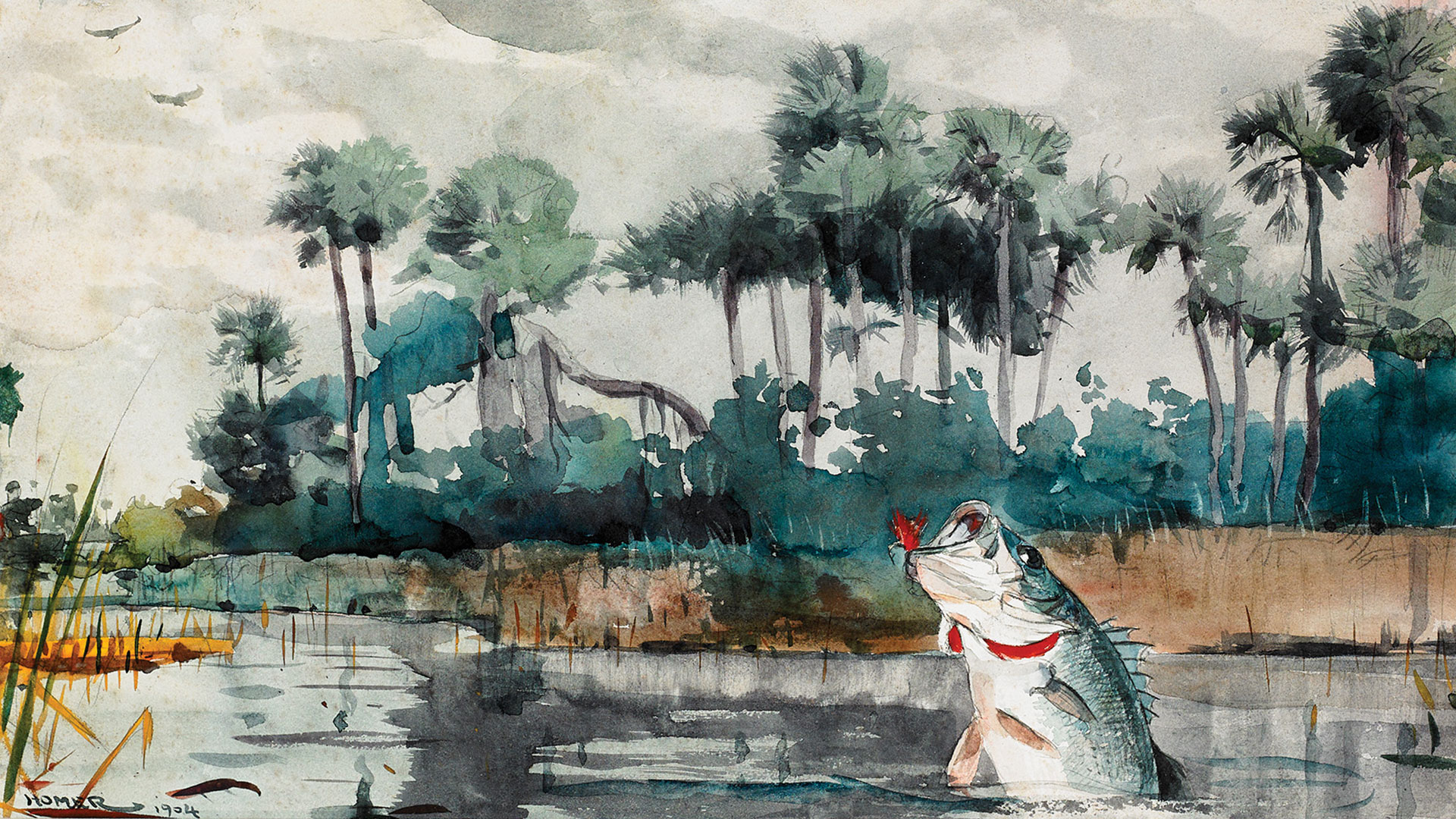
Introduction
North and Central Florida have an abundant surface water system comprised of springs, creeks, rivers, and lakes. These crisscross each other like vessels to transport the lifeblood of this area. These water systems support the natural cycles of nutrients and water and also form wildlife habitats. With nourishment from local water systems, various natural environments include riverine forests, swamps, and prairies. Since the mid-nineteenth century, the beauty of these natural environments has attracted tourists to enjoy these semi-tropical landscapes. River sightseeing and fishing were popular activities for visitors in the nineteenth and early twentieth centuries. By taking steamboats on the Ocklawaha River and Silver Springs, tourists achieved an immersive experience as they viewed cypress, Spanish moss, and flamingos, as suggested by William Aiken Walker’s painting Ocklawaha River, Sternwheeler. The natural landscapes surrounding the water systems in North and Central Florida have provided intellectual and spiritual inspiration for many artists visiting the region. Winslow Homer created a dramatic scene depicting local species during his fishing trip to Homosassa; Herman Herzog captured the fantastic spectacle of natural phenomena related to water systems near Gainesville; Martin Johnson Heade recorded a harmonious landscape in the wetlands close to Ocala. Under the painting brush of these artists, the waters in North and Central Florida appear calm, dark, and lustrous.
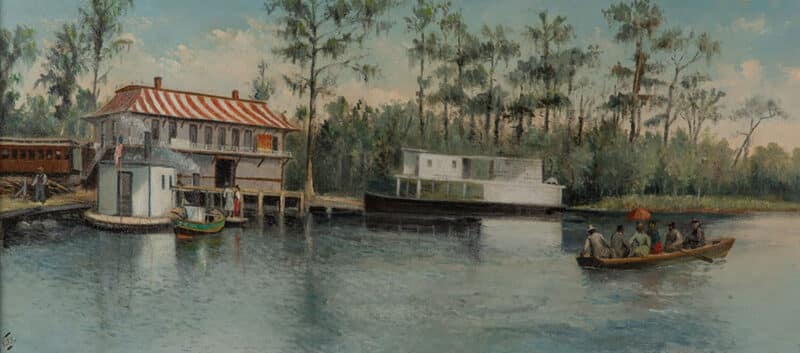
Silver Springs
Artist Unkown
Silver Springs is a group of artesian springs located in North Central Florida, just east of Ocala. As one of the first tourist attractions in Florida, river sightseeing began before the Civil War in the mid-nineteenth century. Early visitors reached the springs by traveling up the Ocklawaha River from its intersection with the St. Johns River to the Silver River. After the Civil War, visitors enjoyed taking steamboats for river sightseeing. In this oil painting, a wooden boat with a group of tourists is near a dock and a train depot that has a colorful striped white and red roof. The scene includes picturesque depictions of Black workers – possibly enslaved people – at Silver Springs which remained segregated into the 1960s.
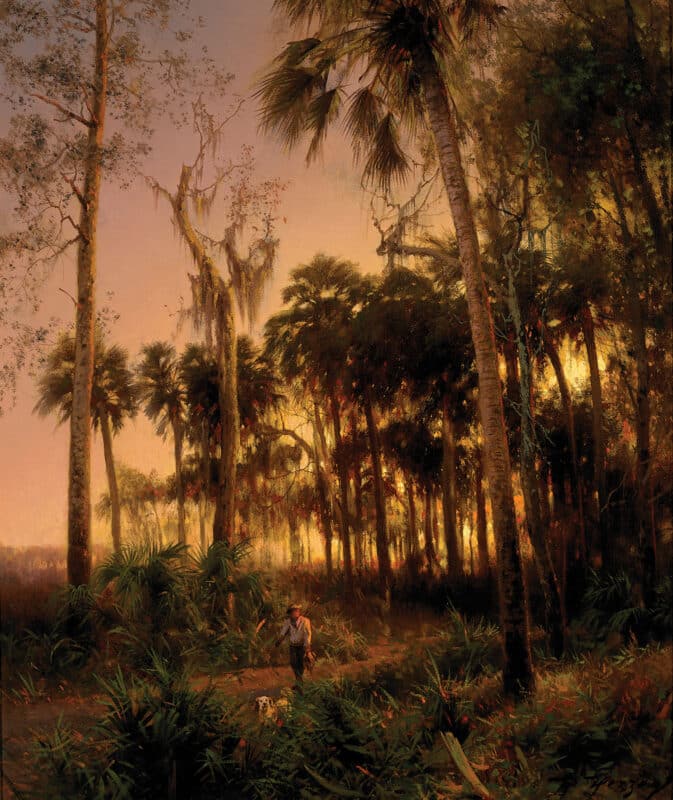
Sunset Near Low Creek, Florida
Herman Herzog
After Herman Herzog first visited Florida in 1884, Florida’s semi-tropical terrain and its wild and abundant vegetation occupied essential positions in his works. He painted over two hundred and fifty views of Florida before he died in 1932. His son John Herman Herzog taught chemistry at Florida Agricultural College in Lake City. In 1902, the name of the college was briefly changed to the University of Florida. In this painting, a man walks on a trail in the heavy woods bathed in a golden sunset. Many springs and aquafers feed the creek system in the Gainesville area. Today, there are 25 creeks in the area. These creek systems nourish local plants and animals and help residents drain the urban water and rainfall.
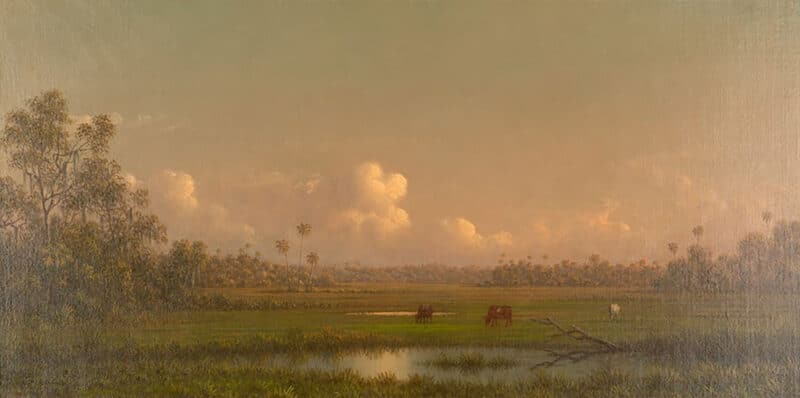
Evening, Lake Alto
Martin Johnson Heade
As a leading landscape painter born in Pennsylvania, Martin Johnson Heade established a studio in St. Augustine in 1883. There he painted luminous landscapes of Florida’s rivers, marshes, and swamps. In this painting, a semi-tropical forest separates the pinkish clouds of sunset from the lush wetland. Situated near Waldo, Lake Alto and Santa Fe Lake are the headwaters of the Santa Fe River with their highest elevations in Alachua County. Wetlands that contain abundant vegetation—swamp tupelo, pond cypress, and red maple—embrace Lake Alto from its east, west, and north sides. Heade commented that this area is “a healthy place but not very attractive, but it is a nice place for people who come for health and can’t afford the prices on the St. Johns.”
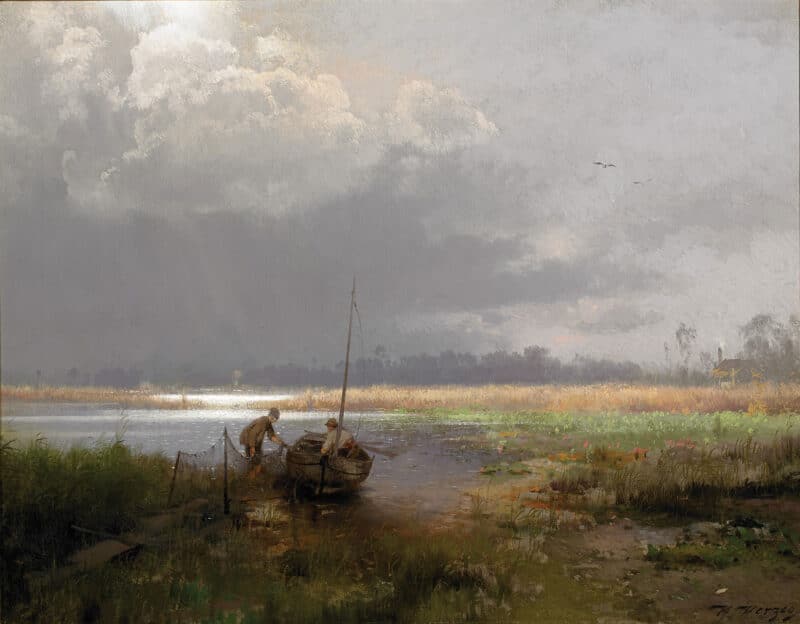
Lake Alachua (Fisherman’s Creek Landing)
Herman Herzog
Florida’s weather constantly changes with uncanny speed. With a keen interest in the changing atmosphere and its influences on water and land, Herman Herzog became an astute interpreter and a rapid recorder of the severe weather he observed. In this scene, two fishermen drag their sailboat to the shore to escape from an approaching storm. Sunlight breaks through the dramatic clouds and splashes on the water’s surface. In the late 1880s, heavy rain and flooding caused the water to accumulate in south Gainesville and Micanopy, an area now known as Paynes Prairie. This lake drained in 1891, and now it is a marsh.
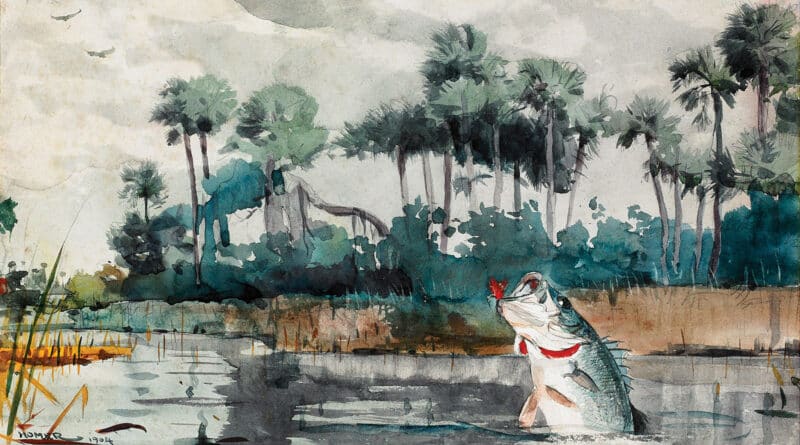
Foul Hooked Black Bass
Winslow Homer
As one of the most outstanding watercolorists in the nineteenth and twentieth centuries, Winslow Homer depicted a dramatic scene in this masterpiece. A bass, one of the top predators in the river, emerges from the swamp as it is caught by the fisherman’s hook. Its open mouth and scarlet gills represent its struggle to break free. Homer painted this scene in January 1904 during his fishing trip to Homosassa, a spring-fed fishing town in Citrus County. Its crystal-clear water lets fishermen see channel bass, black bass, and sea trout six feet away. It is also a working commercial fishing port on the Gulf of Mexico.

Ocklawaha River
William Aiken Walker
In his twenties, after having served as a volunteer in the Confederate war effort, William Aiken Walker worked as a photographer’s colorist. This job required him to provide detailed work, which became a significant feature of his style. Florida was Walker’s winter home for more than thirty years. With his passion for fishing and sailing, he resided in St. Augustine or Ponce Inlet, near Daytona Beach during the winter. He probably painted this scene during a fishing trip with friends in Central Florida. In this small oil on board, Walker depicted the picturesque riverine forest of the Ocklawaha River. Here, a flamingo spreads its wings and rises from the water amid vines and palm trees.
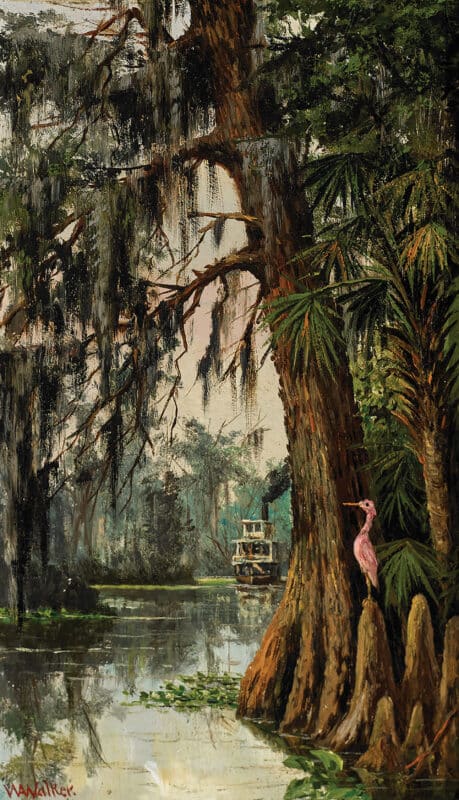
Ocklawaha River, Sternwheeler
William Aiken Walker
As an astute businessman, William Aiken Walker had a primary interest in creating works that would sell. He painted many small pieces that could be easily transported as souvenirs like postcards. He frequently painted southern landscapes as well as plantation landscapes peopled with caricatured images of Black people. In the foreground of this scene, a pink flamingo turns its head toward a steamboat emerging from native Florida vegetation—palms, cypress, and Spanish moss. The water reflects the view of the riverside flora and the sky. In the late nineteenth century, Florida’s riverine forests attracted tourists’ curiosity for exploring. Visitors cruised on larger freshwater lakes and rivers on board paddleboat steamers. The Ocklawaha River and its main tributary, Silver Spring, were popular sightseeing spots.
